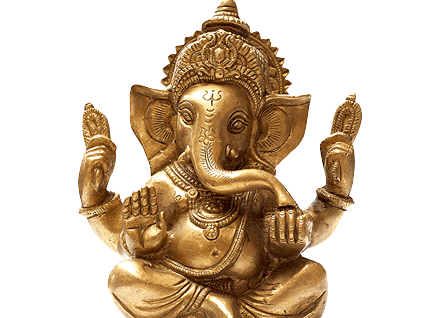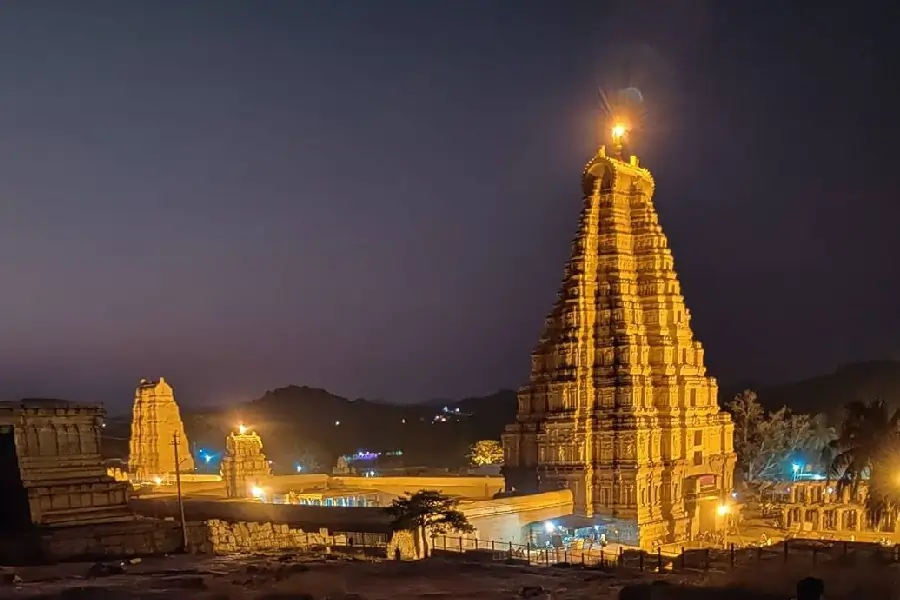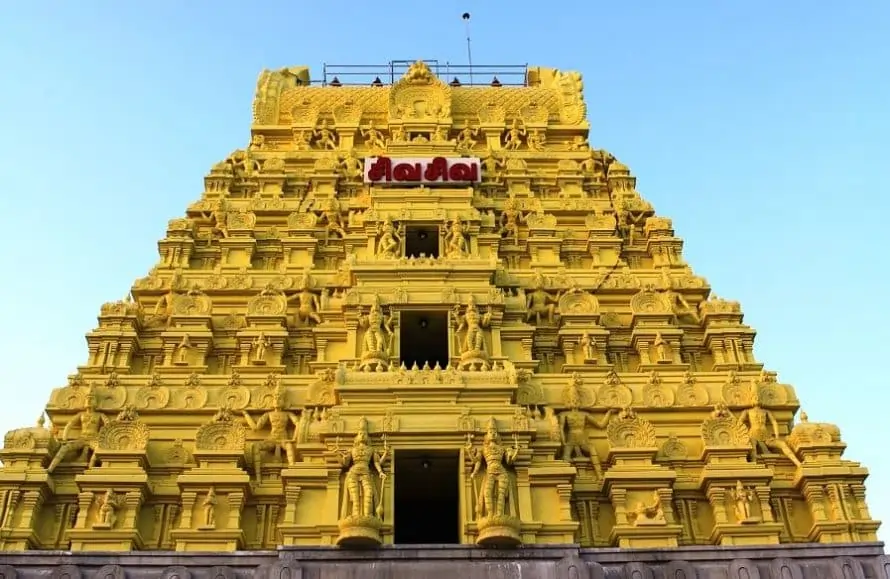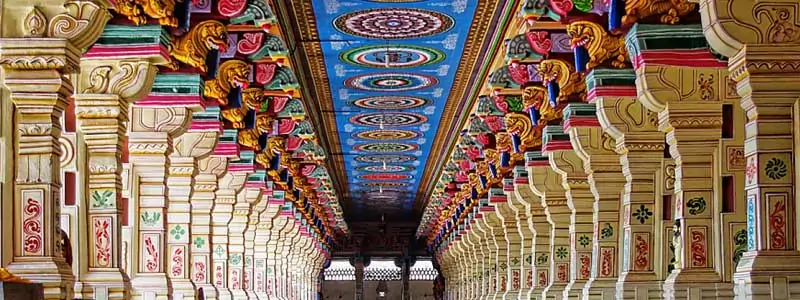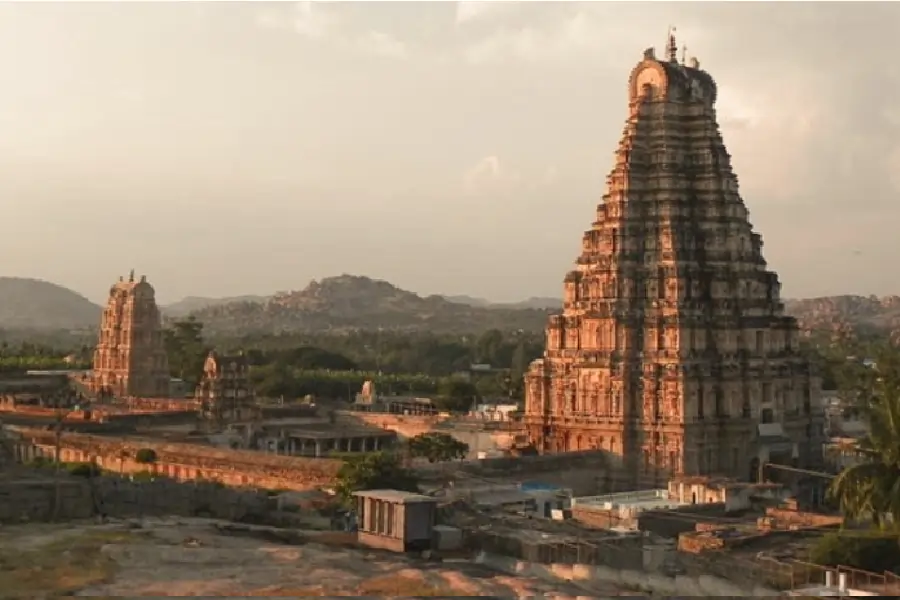
Dhekiakhowa Bornamghar Temple: History, Timing, Rules
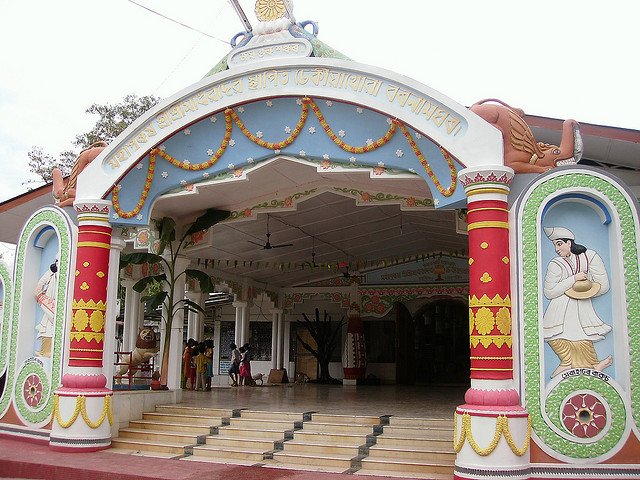
Dhekiakhowa Bornamghar, also known as Dhekiakhowa Namghar, is a famous Vaishnavite temple in the Jorhat district of Assam, India. Madhavdeva, a disciple of the famous saint Srimanta Sankardeva, constructed the temple in 1461 AD. As a significant pilgrimage site for the Vaishnavite community, devotees from worldwide visit this temple.
The word “Dhekiakhowa” has two Assamese words – “dheki,” meaning a traditional hand-operated paddy thresher, and “khowa,” meaning a low-lying land. So, as a tribute to the hardworking villagers who used to thresh their paddy using traditional hand-operated threshers on low-lying land, the temple was constructed at this location.
Know More:- List of Famous temples in Assam
History of Dhekiakhowa Bornamghar Temple
A great Vaishnavite saint, philosopher, and reformer of Assam, Srimanta Sankardeva established the temple in the 15th century. According to legend, Sankardeva had a vision of Lord Krishna in a dream, which inspired him to construct a temple at the spot where the deity appeared to him. So, the temple’s construction followed the traditional Assamese style and used bamboo, wood, and thatch. It was named Dhekiakhowa Bornamghar after the village where it is located.
Read More:- Dah Parbatiya Temple in Assam
Significance of Dhekiakhowa Bornamghar Temple
People consider Dhekiakhowa Bornamghar as a symbol of Assam’s rich cultural heritage and spiritual legacy. Vaishnavites consider it a significant pilgrimage site as it is dedicated to Lord Krishna. Hence, Devotees worship the idol of Lord Krishna with great devotion and reverence in the temple. Dhekiakhowa Bornamghar is an important religious site for the Vaishnavite community in Assam. So, the unique features of the temple including the utilization of elephant tusks for its main door and a sacred pond within the temple complex, contribute to its distinctive character. The Dhekiakhowa Bornamghar temple also has a unique tradition of reciting the entire Bhagavata Purana, a sacred Hindu text, during the annual Kirtan Ghosa.
The temple has been crucial in Assam’s cultural and religious history. It was a center for the spread of the Ekasarana Dharma, which significantly impacted the region’s religious and cultural practices. The temple remains important for religious and cultural activities, including performing traditional music and dance forms.
Know More:- Rudreshwar Devaloya (Mahadev) Temple
Timing to Visit Dhekiakhowa Bornamghar Temple
The Best time to plan a visit to Dhekiakhowa Bornamghar is during the winter season, which starts from the end of October and lasts until the end of March. The weather is pleasant with little to no rainfall, making it an enjoyable time to explore the area.
Rules and Regulations:
Visitors are required to follow certain rules and regulations while visiting the temple. These include:
- Removing shoes before entering the temple premises.
- Dressing appropriately and modestly.
- Maintaining silence and avoiding loud noises.
- Not carrying any leather items, including belts, wallets, and bags, inside the temple.
Culture:
Dhekiakhowa Bornamghar is an important cultural center in Assam. The temple promotes traditional music and dance forms, including the Borgeet and Ankia Naat. These art forms are considered integral to Assamese culture and have been influenced by the Ekasarana Dharma.
Dhekiakhowa Bornamghar is not just a temple but a cultural institution that plays a significant role in preserving and promoting the rich cultural heritage of Assam. The Dhekiakhowa Bornamghar Temple hosts several cultural events and festivals throughout the year, including Bihu, a popular harvest festival of Assam, and Kirtan Ghosa, the annual recitation of the Bhagavata Purana. The temple also promotes Assam’s traditional art and music forms, such as Sattriya dance and Borgeet, a form of devotional music.
The temple also hosts various cultural and educational programs to promote Assamese culture and traditions. The organizers design these programs to engage young people and encourage them to appreciate their cultural heritage. Overall, Dhekiakhowa Bornamghar is an important site for religious and cultural activities in Assam and continues to play a significant role in the region’s history and heritage.
Must Read:- Famous Temple of India
Conclusion
Dhekiakhowa Bornamghar is a unique and important cultural and spiritual landmark of Assam. The Dhekiakhowa Bornamghar Temple is not just a place of worship but also a symbol of the state’s rich cultural heritage and spiritual legacy. Its unique traditions and rituals, beautiful architecture, and serene surroundings make it a must-visit destination for anyone interested in exploring Assam’s cultural and spiritual side.

